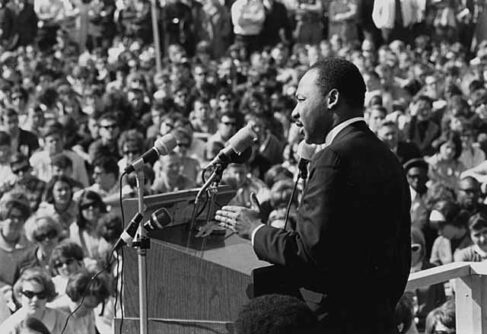“Taxes,” Justice Oliver Wendell Holmes Jr. wrote in 1927, “are what we pay for civilized society.”
For everyone scrambling to fill out tax forms this week, it’s evident that the price paid today is high.
When Holmes wrote that taxes are the price of civilized society in his dissent in the Compania General de Tabacos v. Collector - 275 U.S. 87 case, U.S. income tax was a mere fourteen years old.
Income tax was first imposed by the Revenue Act of 1913—but only on those individuals earning more than $3,000 (or $71,150 in today’s dollars). And what was tax rate on income above $3,000? It started at a mere 1 percent, rising to a marginal rate of 7 percent on individuals earning more than $500,000 ($11,850,000 in today’s dollars). Less than 1 percent of Americans paid income taxes on 1913 income.
Of course, as soon the government started to enjoy the revenue from income tax, the tax burden started to rise. Already by 1927, income tax was imposed on income above the first $1,500 of income and starting at a rate of 1.5 percent.
A century after the income tax was first imposed, 2013 income taxes are imposed on individuals with incomes greater than $8,925—and beginning at a marginal rate of 10 percent, greater than the top marginal rate of 7 percent in 1913. And, the top marginal income rate on 2013 income is imposed on individuals earning more than $400,000—with a marginal rate of 39.6 percent. Now, 57 percent of American households pay federal income taxes.
And, we’re still only talking federal income tax: on top of that, as you well know, is state and county income taxes and payroll taxes—and then sales tax when one goes to spend what’s left.
That’s an astonishing rise in the fraction of income taxed and the rate at which it is taxed, and the fraction of population subject to income tax.
True enough: government provides more complex and more extensive services than a century ago; the sources of revenue, such as tariffs, that the government relied upon before 1917 are not apt today; and the U.S. government must pay for a global military presence that it begun to undertake in 1917 with America’s entry into World War I.
But there are alternatives. The federal government now largely funds the interstate highway system, and yet involving more private and fewer federal taxpayer dollars could get us better, cheaper highways. There are many other smart ways (not dumb, sequester-style broad cuts) that could cut federal spending and, in the long run, let tax rates go back down—not to 1913 or 1927 levels, but below today’s levels.
With more income in their own pockets, there could be a broad resumption of charitable and philanthropic spending, which, even adjusting for inflation, remains 8.2 percent below what it was in 2007. It’s spending of this sort that is essential not only to civilized society but to a truly robust civil society.
All this is to say that the handwringing about the president’s perennial proposal to limit the value of the tax deduction for charitable giving, while important, might not be the most important tax issue for the charitable sector. The most important issue might be the great tax burden that Americans face.
Wouldn’t you, if you owed a little less on April 15, give at least a little more to philanthropy? What if the 57 percent of Americans who pay federal income tax had more to give to philanthropy?






